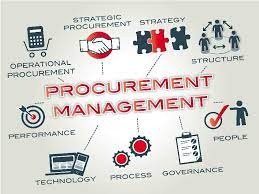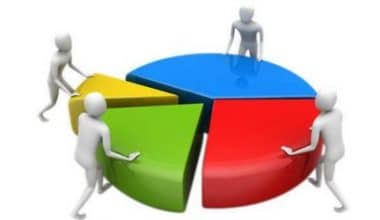The fuel that keeps the project development process moving is goods, materials, and services. If they are of poor quality or in insufficient numbers, your project may not be completed successfully. As a result, in order to execute a project efficiently, a project manager must create and maintain relationships with vendors. This is where project procurement management comes into play, assisting a project manager in executing a successful project. This essay will provide you with a thorough understanding of how it is done and the 4 main processes in the project procurement management and plan. But first, let’s look at the definition of project procurement management.
Project Procurement Management Definition
According to the Sixth Edition of the PMBOK® Guide definition, Project Procurement Management encompasses the processes required to purchase or acquire products, services, or results from sources other than the project team.
One of the ten Knowledge Areas that serves as a supporting pillar for the Project Management Framework is project procurement management. Its primary goal is to build and maintain positive relationships with suppliers who provide goods and services throughout the project’s lifecycle.
Contracts are commonly used to establish and legitimize vendor agreements. It ensures that the necessary goods and services are delivered on schedule and that the project quality criteria specified by the purchasing organization are met. This considerably aids in the smooth execution of the project development process and guarantees that the project’s objectives are met. Project procurement management is an essential component of supply chain management.
You might be wondering, “How exactly does this work?” Well, project procurement management follows a logical procedure in which you must first determine what you need to contract and how you want to do so. After that, you’ll need to send your contract requirements to the sellers. When your contract is distributed, the sellers begin to submit bids. You must now choose the best one and finalize the contract with them. When project development begins, you must constantly check to ensure that the contract is being followed. When the project is finished, you must conclude the project contract and complete the relevant papers.
The 4 Main Project Procurement Management Processes
When you are ready to purchase items from a vendor, project procurement management is divided into 4 main processes.
#1. Project Procurement Management Plan
Procurements are first identified during the project’s planning phase. A statement of work (SOW) is required for each external contractor to serve as a document describing the task being contracted.
Prior to the contract, however, is a request for proposal in which many contractors bid on the job, and the project manager determines who will obtain the contract based on their offers.
These requests are well-thought-out because they serve as project guiding documents. The more their specificity, the better. This prevents later confusion and aids in the development of more precise plans.
This procedure is documented in the procurement management plan, which includes requirement documents, a risk register, activity resource requirements, a project schedule, activity cost estimates, and other information.
There are tools and methodologies available to help guide these decisions, such as make-or-buy analysis, which determines if a task requires an external provider or can be completed in-house. Seeking expert advice, conducting market research, and meeting with stakeholders all help to guide this decision.
#2. Procurement Execution
After completing the paperwork in the first phase, the conduct procurement phase is when you examine the bids that are returned and decide which one to accept. However, before making a decision, a criterion should be in place to determine which bid is best for the project and fits your logistics management. After that, the agreements are signed, and the project management plan is updated.
Determine the winner by conferring with the bidders, developing techniques for evaluating proposals, and obtaining independent estimates to ensure that the bids are within the normal range. It never hurts to seek the advice of experts in the fields in which you are contracting.
There are also analytical techniques that can be used. Advertising is a good way to ensure that you’re casting the broadest net possible, allowing you to make a decision based on all potential bidders. Then there will be procurement negotiations to fine-tune the final contracts to meet both your and the contractor’s needs. A purchase order should be used to document the price, quantity, delivery window, and payment terms of the goods/services you order. It’s a legally binding contract that ensures you and your vendor are on the same page. Our purchase order template can assist you in creating one that is appropriate for your project.
#3. Procurement Control
Once the contracts have been signed, the management of those contractors must be incorporated into the overall management responsibilities. Contractors can have a negative impact on budgets and timelines, causing a project to go off track or worse.
As a result, regular status updates are required to review contractor agreements, obtain progress updates, and evaluate work performance to ensure that contractors are meeting the requirements outlined in their contracts. Even if you hire contractors because they are experts in their field, you must still monitor and track their work to ensure it is progressing as planned.
To ensure that the work is done correctly, it is best to contract a change control system and conduct regular procurement performance reviews, including inspections and audits. Managers are also kept informed by performance reporting. A payment system, as well as a claims administration and records management system, must be in place. To facilitate performance monitoring, work orders must include all details about the work being performed by contractors.
#4. Procurement Closure
Just as there is a process in place to begin the procurement, there must be one in place to complete it. What constitutes completed work should be specified in the initial agreement with the contractor so that neither party is confused about when the work is completed.
A formal release of liability is usually required for insurance and bonding. This ensures that there are no outstanding changes to the contract’s value or completion date.
Procurement audits, as well as structured procurement negotiations, aid in this process. To manage all of the paperwork associated with this stage of the procurement process, a records management system will be required.
So, this was all about how procurement management should be carried out. But what are the elements that it must include in order to provide a correct direction for project development?
Important Elements of a Project Procurement Management Plan
I’ve compiled a template for a project procurement management plan below:
- The full list of deliverables that will be procured through proposed contracts.
- There should be resource management strategies in place that are successful enough for contract negotiation and management.
- The technique of purchase chosen must be clearly indicated.
- Key phases in the selection of suppliers and vendors must be noted.
- The key steps of the supplier and vendor selection process.
- A proper procurement funding strategy should be provided.
- The sample of the purchase contract must be present.
- Reference materials for approving and insuring quality, as well as risk management, should be supplied.
I hope you now have a good understanding of what project procurement management entails. Let’s take this article a step further and look at how it might help a project.
Read Also: What Is An RFP (Request For Proposal): All You Need To Know
Benefits of Project Procurement Management
A project can benefit from procurement management knowledge in a variety of ways. I’ve mentioned a handful of them below:
- It aids in identifying the items and services that must be bought for the project to be completed successfully.
- Provides a comprehensive list of Purchase Orders and issues to vendors.
- It specifies agreed-upon delivery dates and methods.
- Aids in the evaluation and procurement of goods and services from suppliers.
- It validates the milestones in the supplier contracts and approves their payment.
- Serves as a reference for evaluating the supplier’s performance in relation to the contract.
- It aids in the identification and resolution of supplier performance issues.
- It serves as a communication channel, informing senior management on the state of the project.
What Is the Role of the Project Manager in Procurement?
The project manager is involved in procurement, as with any other component of the project management process that they have responsibility for. However, this is a procedure that they may not have as much power over as other aspects of the project.
While the project manager has the power to enter into agreements with contractors on behalf of the organization, the project manager is not often the person who oversees the contract after it is in place. Regardless, it is critical that the project manager is kept informed.
That entails being familiar with the six processes and project procurement management knowledge domains specified in the Project Management Body of Knowledge (PMBOK). The first is to plan purchases and acquisitions, which means assessing what external resources are required for the project. Because they are more educated about the entire project requirements, the project manager will have control over this.
Plan contracting is the process of developing requirements for whatever items or services are required, as well as determining which organizations provide these products or services. Then, request seller answers by reducing the companies down to a few and then picking the sellers, who are usually the purveyors of the purchasing department.
Contract administration is the management of the vendor’s contract. The project manager will collaborate on a daily basis with the vendor’s account manager. Contract closure occurs when the contract is completed. The buying department is normally in charge of this again.
Project Procurement Management FAQs
What is the first step in project procurement management?
Making a plan is the first step in successful project procurement management. This entails making plans for the following: What materials and services will you need for the project? This contains all material and service parameters, such as minimum quality requirements.
Why is project procurement management important?
It is critical to manage this process to guarantee that all relevant services and materials are selected and obtained by a certain deadline.
what are the 4 main processes of project procurement management
The 4 main processes for project procurement management are planning, selection, administering, and closing procurements.






